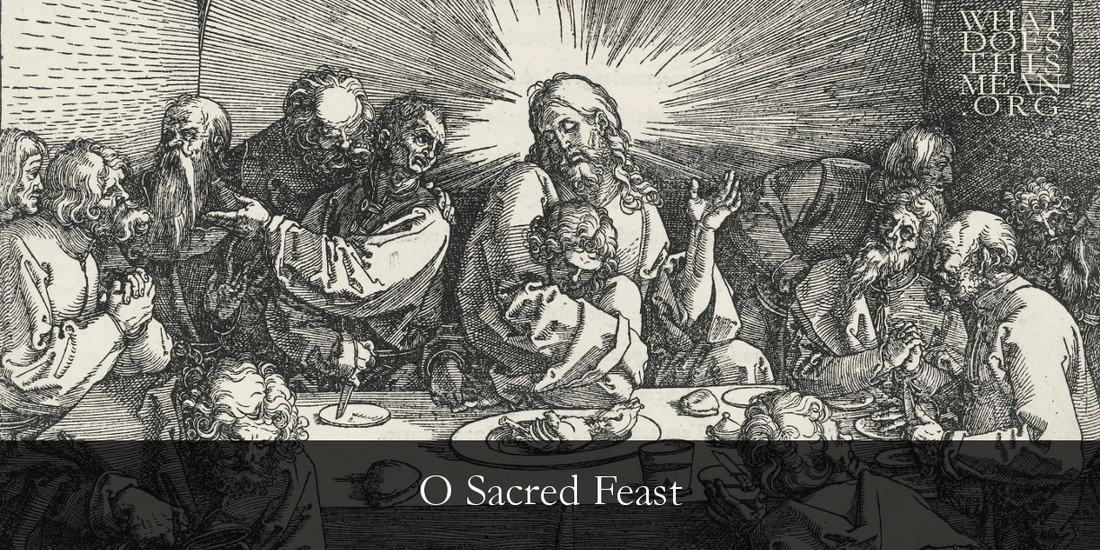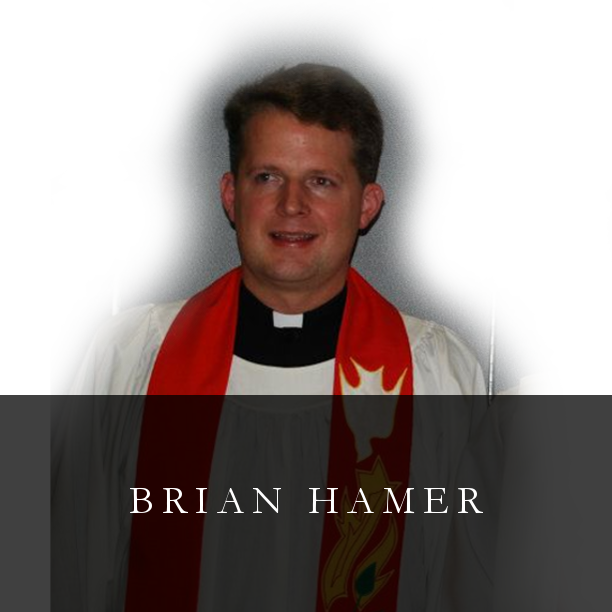| O sacred feast, At which Christ is consumed, The memory of His passion is renewed, The mind is filled with grace And a pledge of future glory is given to us, alleluia. | O sacrum convivium in quo Christus sumitur: recolitur memoria passionis ejus: mens impletur gratia: et futurae gloriae nobis pignus datur, alleluia. (Liber Usualis, p. 959) |
Biblical foundations for the text are numerous and varied. It is rooted primarily in the Words of Institution and related texts, as the following parallels to Luke’s Passover Narrative (22:14-23) demonstrate:
| O Sacrum Convivium O sacred feast at which Christ is received The memory of His passion is renewed The mind is filled with grace and a pledge of future glory is given to us. | St. Luke 22:14-23 Jesus reclined at table and (22:14) “I have earnestly desired to eat this Passover” (22:15) “This is My body” (22:19) “This cup . . . is the new covenant in my blood” (22:20) “Take this [cup], and divide it among yourselves” (22:17) “Do this in remembrance of me” (22:19) “The hand of him who betrays me is with me on the table” (22:21) “The Son of Man goes [to His Passion] as it has been determined” (22:22) “Do this in remembrance of me” (22:19) “when [Jesus] had given thanks [gratias]” (22:19) “I will not eat [the Passover] until it is fulfilled in the kingdom of God” (22:16) “I will not drink of the fruit of the vine until the kingdom of God comes” (22:18) |
Musical settings of O Sacrum Convivium abound (the catalogue of the Vienna Nationalbibliothek lists 80 settings), including chants, motets, and anthems. As with most Medieval texts, the foundational musical form is plain chant. In the following excerpt, try to follow the melody in Gregorian notation:
The florid lines of plain chant, combined with more complex harmony, flowered in the Renaissance as the motet, including the following setting by Tomás Luis de Victoria (1548-1611). Follow the translation provided at the bottom of the screen and hear how the music changes with each new phrase of the text. As for the music itself, take your pick of six interdependent, florid lines, each one a beautiful and florid melody that sounds as if it is weaving its way to heaven:
To be sure, it will remain for our children and grandchildren to lay claim to numerous texts by Thomas and other early and Medieval fathers that are edifying in a Lutheran context. For example, check the index to authors in any Lutheran hymnal printed on American soil. Charles Wesley generally has about 8-12 texts (9 in LSB), while Thomas is conspicuously absent from most Lutheran hymnals! (Recall that a hymn must be Lutheran in its content, not necessarily in its name, to be considered for inclusion in a Lutheran hymnal.) Reality suggests that Thomas will not catch up with Wesley in my lifetime. Nevertheless, the presence of two texts by Thomas in LSB, along with the occasional use of “O Sacred Feast,” is a tremendous stride forward in our sacramental piety. As another hymn by Thomas puts it:
| Now, my tongue, the myst’ry telling / Of the glorious body sing, And the blood, all price excelling, Which the Gentiles’ Lord and King Once on earth, among us dwelling, Shed for this world’s ransoming. (LSB 630.1) |



 RSS Feed
RSS Feed
